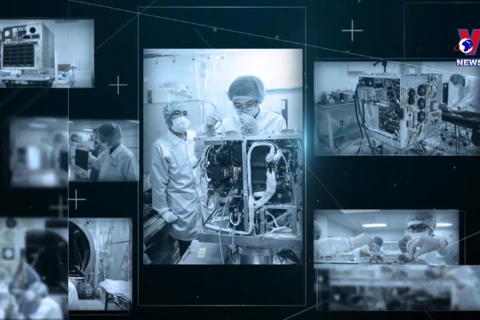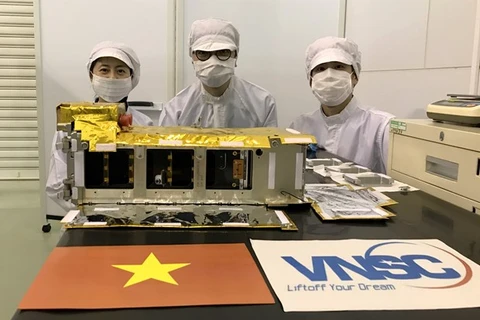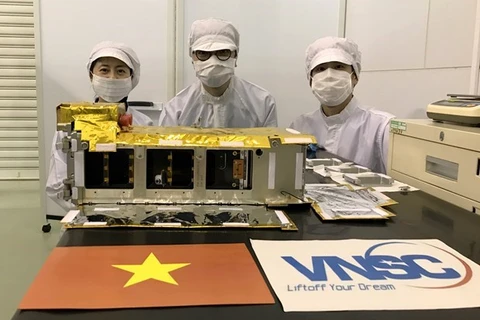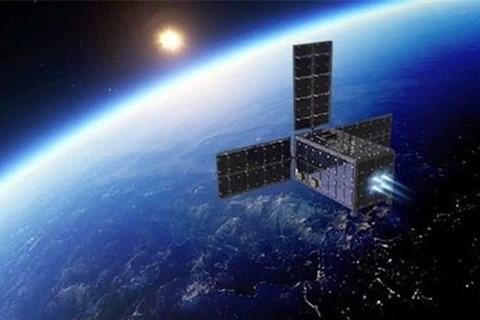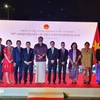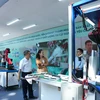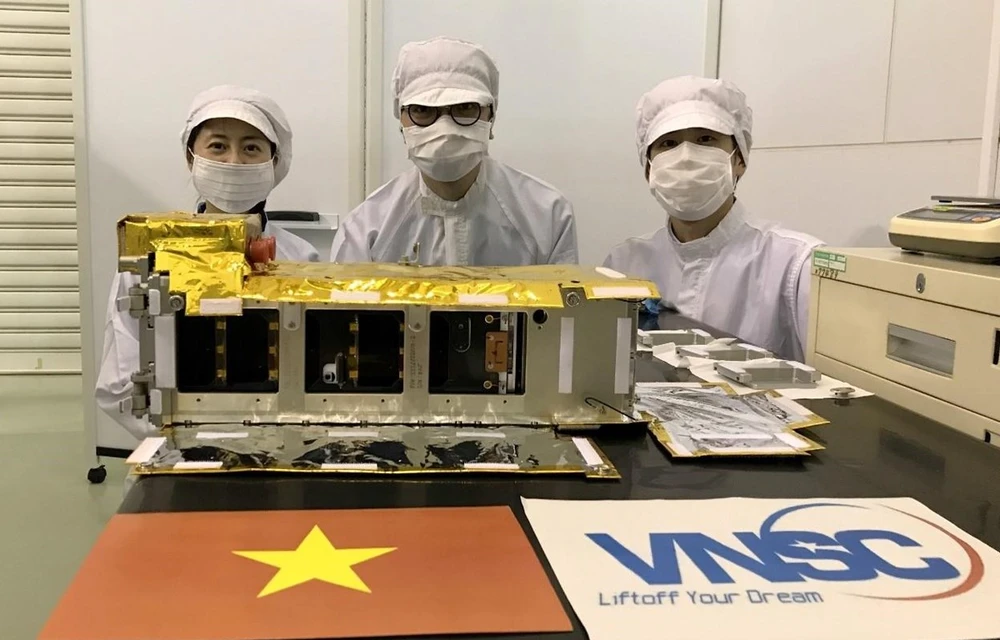
Hanoi (VNA) - The upcoming launch of the satellite into orbit at the height of about 560km from the Uchinoura Space Center in Japan’s Kagoshima prefecture will add to Vietnam’s step-by-step realisation of its dream to conquer the space, develop the economy, maintain the national security sovereignty, and protect the environment.
Ready to launch
Developed by the Vietnam National Space Center (VNSC) under the Vietnam Academy of Science and Technology, NanoDragon is the result of a project to design, manufacture, launch and test operation of a nano-sized microsatellite under the national space science and technology programme in the 2016-2020 period.
The government has recently approved a strategy for the development and application of aerospace science and technology by 2030 with an aim to expand the use of these technologies, master the design and manufacturing technologies of earth observation satellites, and support start-ups in the field.
Weighing 3.8kg kilograms, the satellite was developed with the purpose of demonstrating it could use micro-satellite beam technology to receive the Automatic Identification System (AIS) signal to track and monitor activities at sea.
Le Xuan Huy, VNSC Deputy Director and a member of the research team, said the idea of producing this satellite had been around since 2014. Then, in about four years from 2017-2021, nearly 20 scientists of the team worked on designing, integrating and testing the functions of the satellite, Huy added.
According to the VNSC, after the manufacturing, integration and functional testing were conducted in Vietnam from March 9 - April 9, the satellite has passed pre-launch environmental testing at the Kyushu Institute of Technology in Japan.
Along with the satellite development process, a ground station to operate the satellite after its launch has been installed and ready for operation at the VNSC in the Hoa Lac Hi-Tech Park in Hanoi.
Space dream of Vietnamese
In 1980, Pham Tuan was the first Asian astronaut to fly into space.
In 2006, the Space Technology Research and Development Strategy towards 2020 was approved by the Government.
In 2008, Vietnam made VINASAT-1 satellite, its first telecommunications satellite.
In 2012, the Vietnam Space Center Project was started.
In 2013, Vietnam's first remote sensing satellite, VNREDSat-1, was launched into orbit. Also in 2013, PicoDragon satellite was the first satellite completely manufactured by Vietnam (weighing 1kg).
In 2019, the MicroDragon satellite, which weighs 50kg, was made by 36 Vietnamese engineers and supported by many Japanese professors in the design and development process.
These mark the first major steps forward taken by the country’s fledgling aerospace industry.
PicoDragon was completely built in Vietnam by a group of local researchers who had zero experience in the field, said VNSC General Director Assoc. Prof., Dr. Pham Anh Tuan. They were experts in different areas of the science-technology industry before gathering for the project, so they got shaky at first and started to learn everything from scratch, he said.
MicroDragon, meanwhile, was created in a more professional environment in Japan with 36 Vietnamese engineers in support of Japanese professors and more advanced technologies, according to Tuan.
NanoDragon was completely made in Vietnam and by Vietnamese engineers from the VNSC, from the stage of design through manufacturing, testing and others.
VNSC Deputy Director Le Xuan Huy said NanoDragon is yet to reach expectation as it was developed with limited infrastructure. To partly fix the problems, the team had to ask for cooperation from foreign partners to have some parts of the project done overseas, he added.
The developers expect the satellite will function well to monitor marine vehicles with an automatic identification system and send relating data back to the ground.
Vietnam should view the aerospace as one of the five spaces it must master to be capable of safeguarding the national interests, Tuan said. Aerospace technologies require big resources, from capital to human resources and time, to ensure its balanced and sustainable development, he noted, adding that to boost the space science and industry, the country needs to stimulate demand for related technologies.
According to Vice President of the Vietnam Academy of Science and Technology (VAST) Associate Prof. Dr. Chu Hoang Ha, the national-level programme on aerospace technology in the 2016-2020 period contributed significantly to building a highly competent workforce, producing regional- and global-level products, and making space technologies an important tool serving socio-economic growth and ensuring defence and security./.

